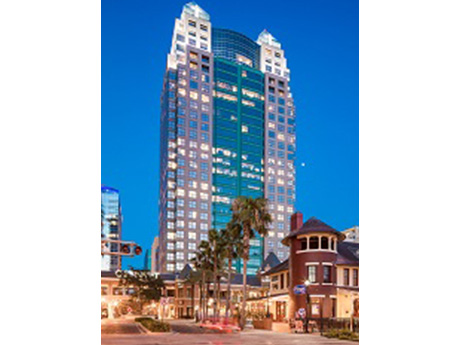The Orlando office market saw improved office activity in the second quarter after a somewhat slow start to the year. Quarter-over-quarter, the average deal size rose by 11.2 percent with Downtown, South Orlando and East Orlando as the three submarkets benefitting from an increase in office leasing activity. The majority of institutional landlords in downtown Orlando are some of the early adopters of flight-to-quality phenomenon, and as a result, tenants from other submarkets have shifted their focus to the city’s Central Business District (CBD).
On the other hand, South Orlando enjoys a built-in advantage of having perhaps the greatest number of restaurant options in the greater Orlando area, with easy access to both Sand Lake Road and Millenia Mall areas offering various food options. The need to be co-located with some of the military branches located in Central Florida Research Park drives many simulation and military/defense sector tenants to seek office space in East Orlando, also providing nearby access to the University of Central Florida.

Aside from geographical location, more and more tenants are seeking out higher-quality office space while rightsizing their footprint. This is predominantly fueled by flex/remote office schedules combined with the need for employers to provide an improved office environment. Retention and recruiting are also at the forefront when it comes to identifying office buildings, submarkets and quality of build-out.
Employers are looking to improve overall commute times for their employees, which results in an increased amount of attention paid to how each office building underway impacts average drive times for the Orlando workforce. Some offer toll cost reimbursements, while others allow employees to start their workday after typical rush hours.
Proximity to SunRail is another element that is unique to the Downtown submarket. The transit system offers additional logistical advantages for tenants looking to relocate their office space.
As tenants and landlords continue to discuss the quality of office space, landlords are adding more unique amenities outside of traditional offerings, such as fitness centers and conference rooms. Landlords are considering improving outdoor space for tenants, lounge areas in the lobbies (for example, Highwoods at Cap Plaza I and II), and in some cases even golf simulators (Piedmont at 200 S. Orange Ave, which was recently rebranded to “The Exchange on Orange”). Additionally, they are more conscious of their retail and restaurant offerings, focusing on quality over sheer presence.
Landlords have in turn increased rental rates, including tenant improvement (TI) dollars, as tenants demand more concessions. Average Orlando asking rates have increased by 1.9 percent year-over-year, closing the quarter at $26.75 per square foot. Downtown rates saw the strongest growth with an 8.2 percent annual increase, while suburban rents grew 1.3 percent over the same period.
The suburban market with the strongest growth is the Airport/Lake Nona area with an 11.9 percent annual jump in rent. This hike can be attributed to the new, higher-class product coming on line. In East Orlando and South Orlando, the rates increase purely due to market demand.
When looking at office-using companies in the market, the tech industry has seen continued growth. Orlando continued moving up in CBRE’s annual “Scoring Tech Talent” report, which ranks the top 50 tech markets in North America and outlines tech labor market trends. “Tech talent” is defined as 20 key tech professions — such as software engineers and systems and data managers — across all industries.
Orlando moved up one spot to No. 28 in the report and stood out in several other key areas:
• From 2017 to 2022, Orlando’s tech talent workforce grew by 9,760 professionals to a total of 47,840 professionals, a 26 percent increase — the largest percent increase across the Florida markets.
• Orlando’s average wage for tech talent in the industry was $73,978 in 2021.
• Orlando’s average wage for all tech jobs grew by 23.9 percent from 2017 to 2022.
• The market created more tech graduates (13,913 from 2017 to 2021) than tech jobs (9,760 from 2018 to 2022), which is the second-most tech graduates across the state. This underscores that Orlando generates surplus tech talent for expanding and relocating companies.
• The average one-year cost for operating a 500-employee tech company occupying 60,000 square feet in Orlando amounts to $47.4 million, squarely in the middle of the top 50 markets.
— By Andrei Savitski, Senior Vice President of CBRE. This article was originally published in the August 2023 issue of Southeast Real Estate Business.


